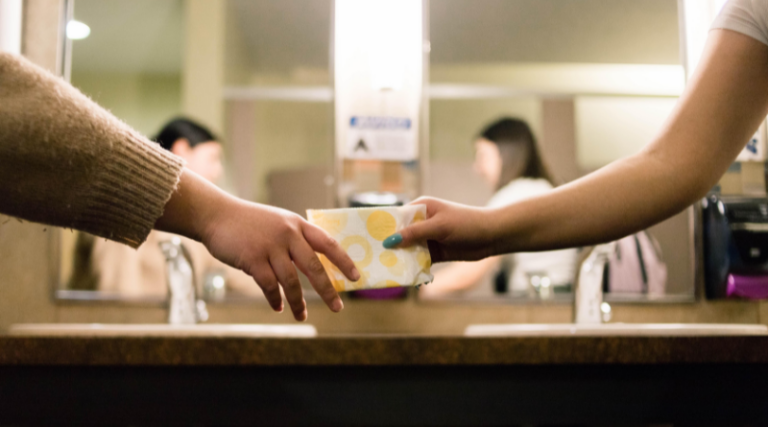The menstrual cup: pros and cons
If you’re going to spend around ten years bleeding, why not be as comfortable and confident as possible?
The average person who menstruates spends around ten years of their life menstruating. That’s a lot of periods, and a lot of time your body spends producing blood – and I’m sure you want to feel comfortable and confident when it happens. If that’s the case, the menstrual cup is a product that might be worth trying.
If you aren’t already aware of the menstrual cup, here’s the lowdown. It’s a silicone cup that, when correctly inserted into the vagina, collects your period blood. Popular brands include Mooncup, Softcup and Divacup.
I started using a Mooncup five months ago and have never looked back! Its reliability and comfort have made my periods far less of an inconvenience. So, if you’re curious about the menstrual cup, I’ve put together some pros and cons.
The pros of using a menstrual cup
1. Save that dollar! As a student, this is my favourite perk of the menstrual cup. I use a Mooncup, which retails at around £20. It’s initially more expensive than tampons and pads… but remember, this little guy lasts years so you’re actually saving a fortune!
2. The environment will appreciate it. You aren’t constantly flushing and throwing out packaging with a menstrual cup, helping our world just that little bit more.
3. Your body will appreciate it too! Unlike some tampons, menstrual cups don’t contain bleach, latex or other harmful chemicals you’d rather not have sitting in your body. Not to mention that tampons are made from cotton that can damage your vaginal walls, dry you out and increase your chances of getting Toxic Shock Syndrome (TSS). Menstrual cups collect your blood, not absorb it. So this isn’t a worry!
4. Freedom! Fewer changes are needed with menstrual cups as they collect more blood than a tampon or pad can absorb. An average tampon holds between six and nine grams of liquid, whereas menstrual cups hold about five times that amount. You can leave them in for up to 12 hours (longer if you have a light flow). So that’s less worry on your daily endeavours and a more confident night’s sleep!
5. You get to know yourself and your cycle. The process of inserting a menstrual cup means getting to know your body in ways you may not have explored before. It is something that may take some time to get to grips with, but you’ll get there! You are also confronted with how much blood your body is producing, which allows you to get to know your flow.
6. Zero visibility. No pad bulge and not one string!

The cons of using a menstrual cup
Although they have a lot going for them, menstrual cups aren’t for everyone – and that’s totally fine. Here are some of the challenges they can present.
1. Blood. A menstrual cup needs to be cleaned and reinserted, unlike a disposable product. If you’re squeamish with blood, this can take a little bit of getting used to. When it comes to cleaning and reinserting a menstrual cup in public, I recommend taking a bottle of water with you. This means you have something to wash your cup with, if there isn’t a sink inside the cubicle. But remember, menstrual cups can last up to 12 hours so you may not even need to!
2. Maintenance. A menstrual cup takes a little maintenance to keep it clean and sterilised between uses. A bit of a pain, but nothing that will take up more than a couple of minutes of your time.
3. Insertion. Practice makes perfect! It may take you a few attempts to learn how to insert your cup properly and it can be a daunting task at first. But once you’ve got the hang of it, you’re a winner.
So why not give using one a go?
In my opinion, the pros outweigh the cons when it comes to the menstrual cup.
There are other reusable period products too, which Hannah Witton goes through in her handy video:
Other support
Read more
Last Reviewed 23 August 2022
Image Credit: Marketing City to Sea via Unsplash







